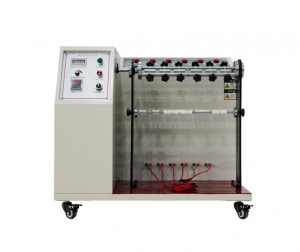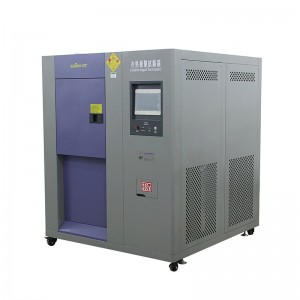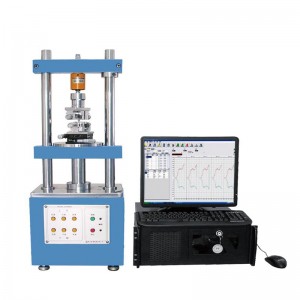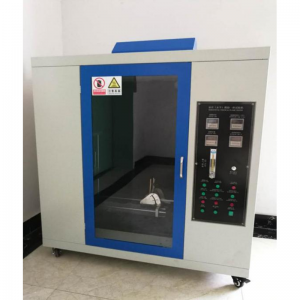-

Wire bending and swing testing machine
Wire bending and swing testing machine, is the abbreviation of swing testing machine. It is a machine that can test the bending strength of plug leads and wires. It is suitable for relevant manufacturers and quality inspection departments to conduct bending tests on power cords and DC cords. This machine can test the bending strength of plug leads and wires. The test piece is fixed on a fixture and then weighted. After bending to a predetermined number of times, the breakage rate is detected. Or the machine automatically stops when power cannot be supplied and the total number of bends is checked.
-

Support custom thermal shock test chamber
Hot and cold temperature shock test chamber refrigeration system design application of energy regulation technology, a proven way to ensure the normal operation of the refrigeration unit can also be effective regulation of the refrigeration system energy consumption and cooling capacity, so that the operating costs of the refrigeration system and failure down to a more economical state.
-

Insertion force testing machine
1. Advanced factory, leading technology
2. Reliability and applicability
3. Environmental protection and energy saving
4. Humanization and automated system network management
5. Timely and perfect after-sales service system with long-term guarantee.
-

Vertical and horizontal combustion tester
The vertical and horizontal combustion test primarily refers to standards such as UL 94-2006, IEC 60695-11-4, IEC 60695-11-3, GB/T5169-2008, and others. These standards involve using a specified size Bunsen burner and a specific gas source (methane or propane) to ignite the specimen multiple times at a certain flame height and angle, both in the vertical and horizontal positions. This assessment is conducted to evaluate the flammability and fire risk of the specimen by measuring factors such as ignition frequency, burning duration, and length of combustion.
Rubber & Plastic Electronic Test
-

Phone
-

E-mail
-

Whatsapp
-

WeChat
-

Top

